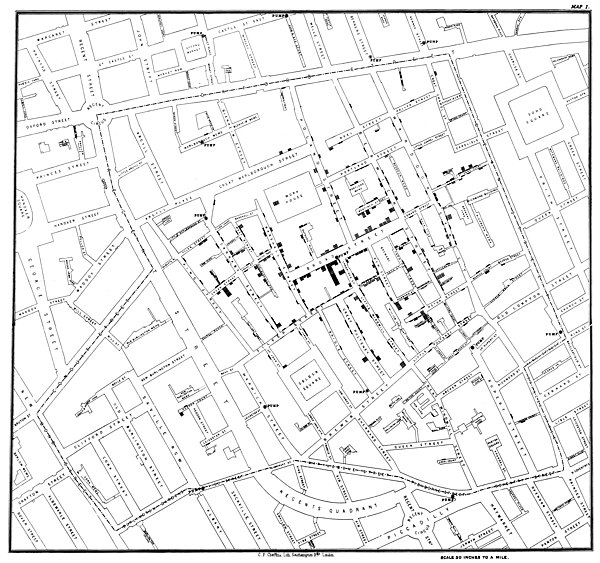The 1854 Broad Street cholera outbreak was a severe outbreak of cholera that occurred near Broad Street (now Broadwick Street), in the London district of Soho, during the 1846–1860 worldwide cholera pandemic. The outbreak, which killed 616 people and had a mortality rate of 12.8 per thousand in some areas, is best known for the study of its causes by the physician John Snow and his hypothesis that germ-contaminated water was the source of cholera, rather than particles in the air (referred to as miasma). This discovery came to influence public health and the construction of improved sanitation facilities beginning in the mid–19th century. This dot map of Soho drawn by Snow shows clusters of cholera cases (indicated by stacked rectangles) in the 1854 outbreak. He identified a contaminated pump, located at the junction of Broad Street and Cambridge Street, as the source. The map, published in Snow's book On the Mode of Communication of Cholera, marks an important part of the development of epidemiology as a field, and of disease mapping as a whole.Map credit: John Snow
